Websites, Logos, Branding & Graphic Design - Creating a Visually Striking Online Presence
Creating a compelling and memorable brand begins with strong visual elements such as logos, websites, and other graphic designs.
New Paragraph

A well-designed logo and website serve as the cornerstone of any effective branding strategy, setting the tone and identity for the business. This ensures that customers recognize and remember your brand, fostering loyalty and trust.
In today's competitive market, it's crucial to tap into the power of professional graphic design. Tools like Looka and Canva provide user-friendly platforms for designing custom logos and branding materials. These resources, combined with insights from experienced designers, can help businesses of all sizes establish a strong and consistent visual identity.
Effective branding doesn’t end with a logo. It involves creating a cohesive visual narrative that extends to every touchpoint your customers interact with. From marketing materials to your website, every graphic element should reflect your brand's values and mission, creating a seamless and engaging experience for your audience.
Key Takeaways
- Professional design tools enhance your brand's visual identity.
- Consistent visuals across all platforms build brand recognition.
- Effective logos and websites are key to memorable branding.
The Fundamentals of Branding
Branding is key to making a company stand out. This section explores the essentials of building a strong brand, covering brand identity, the main components of branding, and the importance of brand awareness.
Understanding Brand Identity
Brand identity is the collection of all brand elements that a company creates to portray the right image to its consumers. It includes the name, logo, design, tone, and everything that helps to set the brand apart. This identity expresses the values, mission, and style of the company.
A strong brand identity involves knowing the target audience and how the brand's visuals, messaging, and overall persona can create a connection. Consistency is vital, ensuring that all aspects of the brand align cohesively, from marketing materials to customer service.
Components of Branding
Branding involves several key components that create a cohesive and recognizable image. Here are some essential elements:
- Logo: The most visible part of a brand, acting as a symbol for the company.
- Color Scheme: Colors evoke emotions and help with recognition.
- Typography: The fonts used convey the brand’s personality.
- Visual Style: This includes imagery, graphics, and layout.
- Voice and Tone: How the brand communicates in written and spoken form.
These elements should work together to reflect the brand's values and mission. Each component needs to be thoughtfully designed to ensure that they complement each other and communicate a unified message.
The Role of Brand Awareness
Brand awareness measures how well consumers recognize a brand and how familiar they are with it. High brand awareness means that when people think of a product or service, your brand comes to mind first.
Building brand awareness involves:
- Consistent Branding: Using the same branding elements across all platforms.
- Marketing Campaigns: Advertising and social media campaigns that keep the brand in the public eye.
- Customer Experience: Ensuring a positive and memorable experience for customers.
Strong brand awareness can lead to trust and loyalty, making customers more likely to choose your brand over competitors. Effective strategies to build awareness can increase visibility and improve the overall perception of the brand.
Logo Design Principles
Creating an effective logo is crucial. It requires a mix of psychological understanding, memorability, and practical design tips.
The Psychology of Logos
Logos communicate messages beyond just visuals. Colors, shapes, and typography all evoke certain feelings. For example, blue often conveys trust and professionalism, whereas red evokes passion and excitement.
Shapes are equally important. Circles can represent unity and community, while sharp edges such as triangles can indicate power or innovation. The choice of typeface also greatly impacts perception. A sans-serif font gives a modern and clean feel, while serif fonts appear more traditional and established. Understanding these elements helps in crafting a logo that resonates with its intended audience.
Creating a Memorable Logo
A good logo should be memorable. Simplicity is key here. Think of iconic logos like Apple's or Nike's. Their simplicity makes them easy to recognize and remember.
Memorability can be achieved through unique shapes, striking color combinations, and easily readable typography. Avoid too many details that can clutter the design. Ensure your logo works well in different formats, such as a PNG with a transparent background, so it can be easily used across various media.
Logo Design Tips
Keep the design straightforward. Less is often more. A clear and simple logo is more impactful and easier to recall.
Versatility is crucial. A logo should look good in black and white, as well as in color. It should be scalable, working well in both small and large sizes. Balance the elements within the logo to ensure it doesn’t feel too heavy on one side or another.
Originality is also vital. Avoid overused trends and strive for a design that is unique to your brand. Incorporate shapes and lines that are distinct, ensuring the logo stands out in a cluttered marketplace.
Visual Elements of Branding
Visual elements are crucial for creating a memorable brand identity. These elements include color palettes, typography, and icons, which help in visually communicating what a brand stands for.
Importance of Color Palette
A color palette sets the overall mood and tone of a brand. Colors can evoke emotions and influence customer perceptions.
Choosing the right colors involves understanding color psychology. For example, blue often represents trust and professionalism, while red can evoke excitement and urgency.
Brands need consistent use of colors across all marketing materials. This consistency helps in building brand recognition. Using a well-defined color palette can enhance overall brand recall, making it easier for customers to distinguish the brand from competitors.
Typography and Fonts
Typography is another key visual element that affects how a brand communicates its message. Fonts convey different attributes; for example, serif fonts are often seen as traditional and reliable, while sans-serif fonts are modern and clean.
The selection of fonts should align with the brand's tone. A tech company may opt for a sleek, modern font, whereas a children's brand might choose a playful or whimsical typeface.
Fonts should be easily readable on various platforms, including websites and mobile devices. Maintaining consistency in font usage across all brand touchpoints ensures coherence and strengthens brand identity.
Utilizing Icons and Shapes
Icons and shapes are essential for simplifying complex information and making it more digestible. They act as visual shortcuts that convey meaning without using words.
Icons can represent products, services, or actions. For example, a shopping cart icon instantly indicates the possibility of making a purchase. Shapes, on the other hand, can frame content and create visual interest.
Using unique and consistent icons helps in making the brand more recognizable. Custom-designed icons resonate more with the brand’s personality compared to generic stock icons. This uniqueness aids in differentiating the brand and reinforcing its identity.
Graphic Design Strategies
Graphic design plays a crucial role in building a strong brand identity and maintaining consistency across all visual elements. Utilizing the right tools and resources can significantly enhance the effectiveness of your design strategy.
Leveraging Graphic Design for Branding
Good design is essential for creating a cohesive brand identity. It involves selecting the right colors, typography, and imagery that reflect the brand's personality and values. These elements should be consistent across all platforms, from websites to social media.
Current trends like Cluttercore embrace boldness and vibrancy. Designers can draw inspiration from such trends to create eye-catching visuals that capture attention.
In addition to creativity, strategic branding requires understanding the target audience. This means using graphics that appeal to the audience's preferences and emotions, helping build trust and loyalty to the brand.
Graphic Design Tools and Resources
A variety of tools and resources are available to assist graphic designers. Software such as Adobe Creative Suite provides comprehensive solutions for creating professional designs. Free alternatives like GIMP and Canva offer user-friendly interfaces for simpler projects.
Online platforms like Behance and Dribbble are excellent for inspiration and staying updated on trends. Designers can explore these sites to see diverse styles and innovative approaches.
For more specialized needs, resources like 99designs offer strategic insights into effective branding. These platforms provide case studies and examples that can guide designers in developing strong visual identities.
Utilizing these tools and resources can significantly streamline the design process and enhance the overall quality of the work.
Creating a Brand Kit
A brand kit is a collection of visual elements that capture the identity of your brand. It includes essential components that ensure consistency and flexibility, making your brand easily recognizable and memorable.
Essentials of a Comprehensive Brand Kit
A brand kit should start with a professional logo. This serves as the face of the brand and appears on all major materials. Make sure you have multiple logo variations, including a full logo, an icon, and a monochrome version.
Brand colors are another key element. Select a primary color palette that aligns with your brand’s personality and a secondary palette for accents. Keep these colors consistent across all platforms and materials.
Typography is also important. Choose fonts that reflect your brand’s style. This should include fonts for headings, subheadings, and body text. Make sure to outline where and how each font should be used.
Imagery sets the mood for your brand. Select a consistent style of images or illustrations that match your brand’s identity. This can include stock photos, custom illustrations, or branded graphics.
Compile all these elements into a brand style guide. This guide should provide clear directions on how to use each element. Include dos and don’ts to avoid misuse and maintain brand integrity.
Customization and Flexibility
Creating a brand kit that is both customizable and flexible ensures it can adapt to different needs without losing consistency.
Templates help maintain a consistent look across different platforms. Create templates for common uses like social media posts, presentations, and marketing materials. This saves time and ensures every material aligns with your brand.
Customization is crucial. Allow flexibility within your brand colors and typography for different campaigns or special events. For instance, a holiday-themed campaign might use a special color palette while keeping core elements intact.
Digital tools like Canva or Looka simplify the customization process. These tools enable you to tweak designs easily and apply your brand assets to various templates. They also offer features to store and organize your brand elements, making them accessible whenever needed.
Ensure your brand kit can grow. As your brand evolves, update your kit with new logos, colors, or typography to keep it fresh and relevant. This flexibility allows your brand to stay current and engaging without losing its core identity.
Building a Strong Online Presence
Building a strong online presence involves a mix of consistent engagement on social media and creating valuable content like blogs and videos. These elements can help establish a brand and attract more customers.
Engagement Through Social Media
Engaging regularly on social media platforms such as Facebook is key to maintaining a strong online presence. Brands should post updates, respond to comments, and interact with followers.
Using visual elements like logos consistently can also help reinforce brand identity. Social media engagement should be both persistent and consistent to keep the audience interested and involved.
Key points:
- Use a consistent logo and color scheme.
- Regularly post updates and interact with followers.
- Be responsive to comments and messages.
Content Strategy for Blogs and Videos
Creating high-quality blogs and engaging videos is essential for drawing and keeping an audience. Valuable content helps to improve search engine rankings and keeps the audience coming back for more.
Brands should create content that is informative and entertaining. Blog posts and videos should be updated regularly to maintain visibility and relevance. This strategy helps in building a unique and memorable brand identity.
Key points:
- Create engaging and valuable blogs.
- Make informative and entertaining videos.
- Update content regularly for better visibility.
Collaborating with Design Experts
When collaborating with design experts, it's essential to understand the hiring process and the value of engaging with design communities. These steps can streamline communication and enhance the final output.
Hiring Professional Designers
Finding the right designer starts with reviewing designer portfolios. Portfolios give insight into a designer’s style and versatility. Websites like 99designs offer a platform where you can host a logo contest. This allows multiple designers to submit their concepts for your evaluation.
Another strategy is custom logo design services. These services match you with a designer who will work directly on your project, ensuring a tailored outcome. When hiring, consider their past work, client reviews, and their approach to projects similar to yours. Clear communication about your vision and needs will help the designer bring your idea to life.
Exploring Design Communities
Engaging with a designer community offers numerous benefits. Platforms like Figma and Miro provide tools for real-time collaboration. These allow multiple users to work on the same design, share ideas, and provide feedback instantly.
Participating in these communities fosters creativity and innovation. It also helps in staying updated with the latest design trends and techniques. Design communities often hold events, workshops, and brainstorming sessions where you can learn and network with other creatives. This continuous interaction can lead to better design strategies and more efficient project execution.
Supporting Customers and Clients
Great customer service is essential for any graphic design business. Responding quickly and being attentive to clients' needs builds a solid foundation.
Offering educational resources, like tutorials or articles, can attract new clients. This shows expertise and helps small businesses understand what good design can do for them.
Gathering and showcasing client reviews is important. Positive feedback can increase credibility and trust among potential clients.
Cold outreach can also be effective. Sending direct emails to potential clients introduces your services and opens the door for new opportunities.
Highlighting successful collaborations in your portfolio adds value. Showing diverse projects demonstrates versatility and the ability to meet different client needs.
Updating rates and making them transparent helps manage client expectations. Clear communication about costs can prevent misunderstandings.
Meeting clients where they are, both online and offline, is crucial. This might include participating in local events or industry meetups, and engaging in online forums or social media.
Key Points:
- Responsive Communication: Quick replies and attentiveness.
- Educational Resources: Providing guides, articles, or tutorials.
- Client Reviews: Displaying positive feedback prominently.
- Cold Outreach: Direct emails to potential clients.
- Portfolio Display: Highlighting diverse and successful work.
- Transparent Pricing: Clear and updated rates.
- Engagement: Attending both local events and online communities.
By focusing on these aspects, graphic designers can support their customers more effectively and build lasting relationships.
Tools and Platforms for Design
Choosing the right tools and platforms can greatly enhance the efficiency and quality of your design projects, whether you are creating logos, branding materials, or website graphics. This section will explore key tools like logo makers and the effective use of logo templates.
Finding the Right Logo Maker
A good logo maker can save time and help produce professional-looking logos. Popular tools include Adobe Express, Canva, and Vista Create.
Adobe Express is suitable for quick image resizing and editing. It's perfect for those who want to import brand color logos.
Canva offers a free-to-use platform for creating logos, social media posts, and presentations. It provides a wide range of design elements and easy-to-use features.
Vista Create is ideal for social media graphics and business projects. It includes templates, scheduling posts on popular channels, and a built-in brand kit for colors, fonts, and logos.
Using Logo Templates Effectively
Logo templates can speed up the design process and ensure consistency across brands. They are available on platforms like Figma, Canva, and Adobe Photoshop.
Figma stands out with its collaborative features and design systems. It allows teams to work together seamlessly and deliver products faster.
Canva provides a multitude of customizable templates for various design needs. Users can easily adjust these templates to fit their brand requirements.
Adobe Photoshop is known for its advanced editing capabilities. It's ideal for designers looking to create highly detailed and customizable logos from templates.
Frequently Asked Questions
When it comes to branding a company, there are several important points to consider. These include establishing a strong brand identity, creating a compelling logo, and integrating branding consistently across various platforms.
What are the critical elements to consider when branding a company?
A strong company brand should have a clear mission and vision. Knowing your target audience is essential. Make sure the brand identity includes consistent use of logos, colors, and typography. These elements help convey the brand message and make it recognizable.
How can a compelling logo positively impact my brand identity?
A compelling logo can make your brand more memorable. It acts as the face of your business and helps establish a strong first impression. A well-designed logo can convey your brand values, build trust, and attract your target audience.
What are the cost-effective options for small businesses seeking professional website and logo design?
Small businesses can explore freelance platforms for affordable design services. Sites like Fiverr and 99designs offer a range of designers and price points. Additionally, some online tools like Canva provide templates that can be customized for a low cost.
What is the importance of integrating branding across all online and offline platforms?
Integrating branding across all platforms ensures a unified and consistent message. This consistent presence builds brand recognition and trust. Whether on a website, social media, or physical marketing materials, uniform branding helps in creating a strong and cohesive brand image.
How do I choose the right graphic design service for my business needs?
When choosing a graphic design service, consider their portfolio and client reviews. Look for designers or agencies that have experience in your industry. Also, make sure they understand your brand values and can deliver within your budget and timeline.
What are the latest trends in graphic design that can make my brand stand out?
Current graphic design trends include minimalistic designs, bold fonts, and vibrant colors. Custom illustrations and animations are also popular. Staying updated with these trends and incorporating them can make your brand feel modern and relevant.
Building better solutions for better business®




